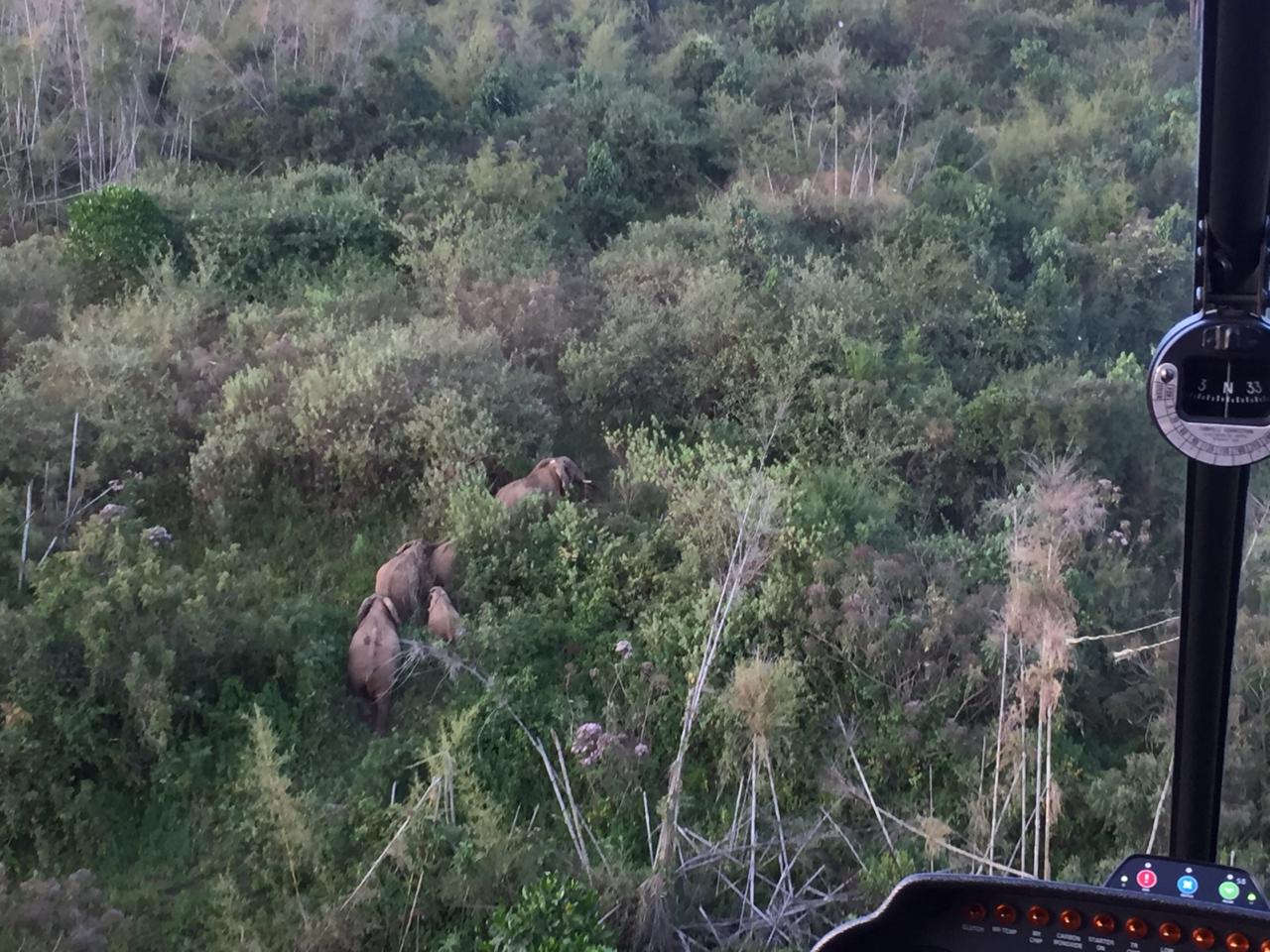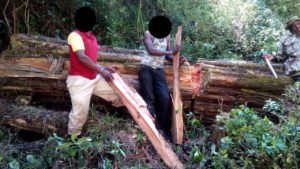The January 2019 report is a bit late as it marks the introduction of a ‘research’ section to the MEP monthly report that will provide updates on MEP’s collared elephants, the environment and the research team all requiring data that’s collected in the middle of the following month. The research team, which consists of MEP Director of Research & Conservation Dr. Jake Wall and Tracking Manager Wilson Sairowua, have been working on setting up the new MEP Earth Ranger server that will be MEP’s platform for tracking elephants, aircraft, rangers and vehicles and entering conflict and other vital data. They have also been working on entering field reports for the monitoring of illegally killed elephants (MIKE), elephant collaring and collar failure events into Earth Ranger for future analysis. As of the end of January, MEP has 14 active collars in the Mara and another two in the Mau Forest.
MEP Monthly Report January 2019
A research highlight for January is the finalization of MEP’s Individual Collared Elephant Report 2011-2018 that documents in detail the movement patterns of the forty-eight elephants that MEP has tracked since 2011 up until the end of 2018. The 98-page report contains a biography, photo ID, wet and dry season home range maps and statistics plus a movement map and statistics for each elephant. It also provides an estimation of the extent to which each elephant has been crop raiding and how they distribute their time across the landscape, both inside and outside of protected areas. Publication of the report, which contains sensitive information, will be made available to the Kenya Wildlife Service (KWS) and to other conservation and research partners.
Here are some research finding highlights from January:
- This month we have seen very little increase in range for MEP’s collared elephants. The exceptions to this are Tressa and Bettye who increased their ranges. Shorty changed his range and moved north 40 km and established a new range in the second half of the month. Caroline performed a streak which we define as a high-speed linear movement. This is the first time we have recorded this behavior by Caroline. This month the 14 elephants collared in the Mara covered a combined range of 650 km2 at a relatively low speed of movement (2.9 kph) and the maximum travel distance was Shorty who travelled 286 km in the month.
- The two collared elephants in the Mau moved entirely within the forest reserve. Notably Bettye had slower movement of speed compared to Wilbur. Bettye is in an area of thick bamboo forest with more rugged terrain and Wilbur has been in an area of reclaimed forest which is less dense and more open. We recorded and responded to a single crop raiding event on the forest edges by Wilbur. The two collared elephants in the Mau covered an area of 38 km2in January and had relatively low speeds of movement and displacement compared to those in the Mara.
- Using 16-day averaged Normalized Difference Vegetation Index (NDVI) values from NASA’s MODIS-Terra satellite, we saw that January was very green and above average in both the Mau and the Mara.

Collared elephant Bettye spotted in the Mau Forest using the MEP helicopter.
Speaking of how much rain the Mau Forest experienced in January, in the Mau, there is higher rainfall generally which leads to two harvest seasons. Currently, many of the fields have ripe maize crops in them and we are seeing increased human-elephant conflict as a result in the Mau. The Sheldrick Wildlife Trust (SWT) Mau De-Snaring Unit rangers based out of the Emitik area have moved to the Olpusimoru forest edge where the elephants were coming out at night to crop raid. They have been using firecrackers, blanks and fires to keep the elephants out of crops. The vehicle cannot get into these areas due to the dense foliage, which presents a perfect situation where the use of a drone would be ideal if permitted. The helicopter was able to assist once, but most teams are responding to human-elephant conflict at night when the helicopter is grounded.
 One suspect was arrested this reporting period with 1 kg of ivory by KWS based on MEP intelligence. Three suspects were arrested, and an illegal logging site was shut down inside the Mau Forest (pictured left). The SWT Mau De-Snaring Unit rangers removed 55 snares and three drop spears inside the Mau Forest and three kilns were destroyed and 20 sacks of charcoal were confiscated in Lemek. MEP intelligence led to the recovery of two firearms at different ends of the Serengeti border area between Kenya and Tanzania. First, 150 rounds of ammunition were recovered then the next day an AK47 and one suspect was arrested by the Tanzania National Parks Authority in the eastern extent of the ecosystem in the Loliondo area. The second firearm was recovered two days later by the Kenya Police based on MEP intelligence near Lolgorian in the western extent of the ecosystem. These are two less firearms in circulation which would have been used for poaching wildlife and causing insecurity in the surrounding region.
One suspect was arrested this reporting period with 1 kg of ivory by KWS based on MEP intelligence. Three suspects were arrested, and an illegal logging site was shut down inside the Mau Forest (pictured left). The SWT Mau De-Snaring Unit rangers removed 55 snares and three drop spears inside the Mau Forest and three kilns were destroyed and 20 sacks of charcoal were confiscated in Lemek. MEP intelligence led to the recovery of two firearms at different ends of the Serengeti border area between Kenya and Tanzania. First, 150 rounds of ammunition were recovered then the next day an AK47 and one suspect was arrested by the Tanzania National Parks Authority in the eastern extent of the ecosystem in the Loliondo area. The second firearm was recovered two days later by the Kenya Police based on MEP intelligence near Lolgorian in the western extent of the ecosystem. These are two less firearms in circulation which would have been used for poaching wildlife and causing insecurity in the surrounding region.

Snares recovered in the Mau Forest in January.
Finally, on January 27, 10 MEP rangers and 10 rangers from local conservancies attended a three-day forensic crime scene training course held at MEP headquarters all funded by MEP core funder, the Sidekick Foundation. The objective of this course was to enhance the prosecution of wildlife crimes through the forensic crime scene training of first responders. The training will help to ensure the correct collection of biological evidence imperative to effectively prosecuting wildlife offenders. During the three-day course rangers attended sessions on law and wildlife crime, the investigation of wildlife crime, the handling of witnesses and court decorum. During these sessions, rangers learned the importance of how to determine if a crime has been committed and define what the crime may be. This will enable the ranger to decide on the correct response and provide the reason for further investigation into an incident. Rangers were also given an overview of CITES to gain a sufficient understanding of the different appendices and the categories different species fall into. They also learned the principles of the investigation of a crime which enabled the trainee to understand their task pertaining to enforcement of the law. During the handling of witness’s session, they learned how to use the correct method to get information from a suspect or witness and put the information into written format correctly. Finally, using the forensic collection kits invented by Wildlife Traxx Consultancy, rangers learned how to properly gather evidence at the scene of a crime. Rangers conducting a mock crime scene investigation during the training course.
Rangers conducting a mock crime scene investigation during the training course.


